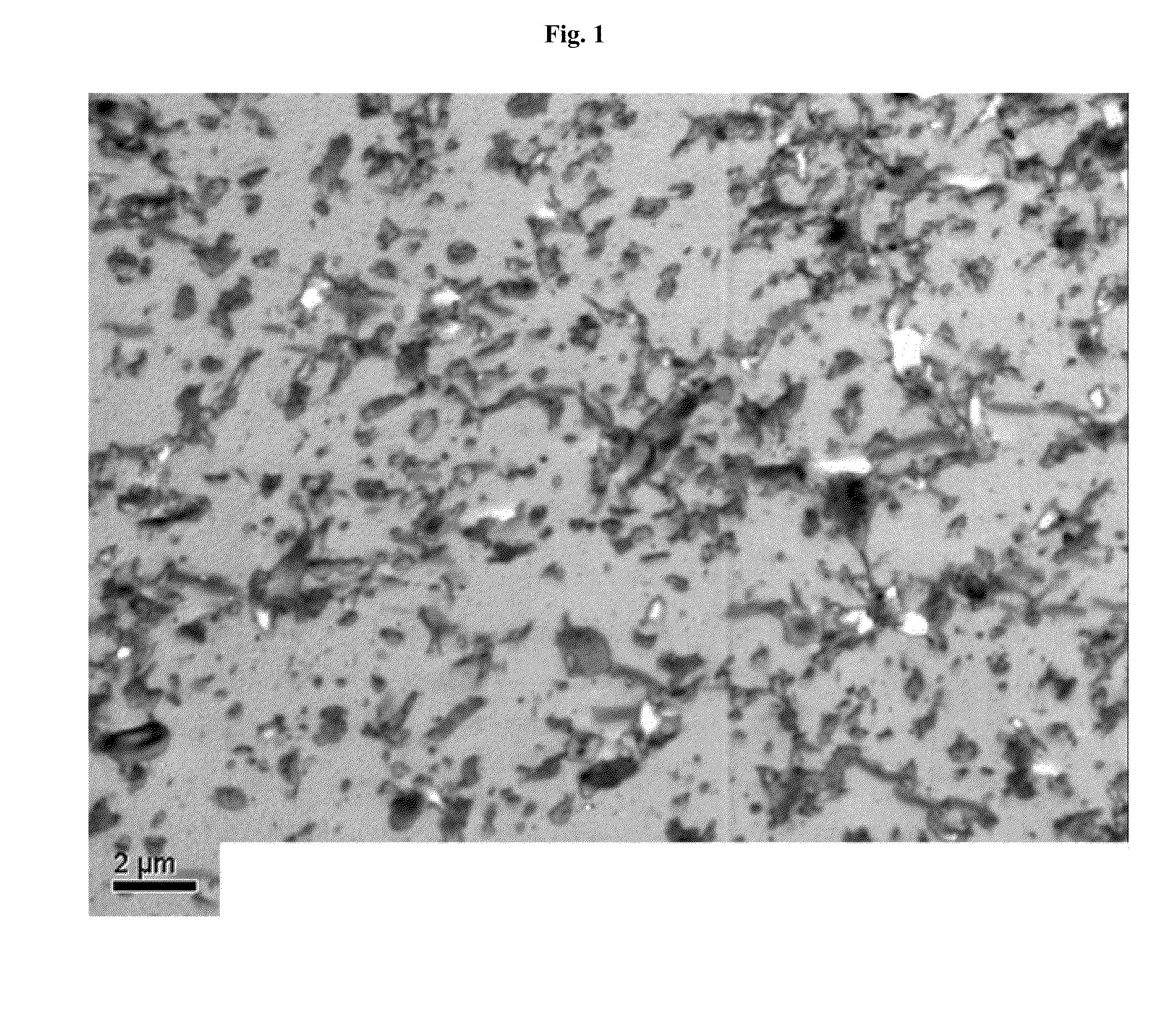Weatherable Thermoplastic Resin Composition Having Excellent Low Gloss Characteristic and Method of Preparing the Same
a thermoplastic resin and composition technology, applied in the field of weather-resistant thermoplastic resins, can solve the problems of limited use of abs resins for many products, easy deterioration of abs resins, and limited effectiveness of weather-resistant stabilizer techniques, and achieve excellent low gloss characteristics
- Summary
- Abstract
- Description
- Claims
- Application Information
AI Technical Summary
Benefits of technology
Problems solved by technology
Method used
Image
Examples
example 1
[0134]A first reactant is prepared by mixing about 35 parts by weight of toluene, about 0.2 parts by weight of benzoyl peroxide (BPO) and about 0.03 parts by weight of t-dodecyl mercaptan (TDM) with about 100 parts by weight of a first monomer mixture including about 90 parts by weight of butyl acrylate (BA), about 5 parts by weight of styrene (SM), about 2 parts by weight of acrylonitrile (AN) and about 3 parts by weight of acrylic acid (AA).
[0135]A polymer is prepared by polymerizing the first reactant at a temperature of about 80° C. for a residence time of 8 hours after injecting the first reactant at a rate of about 1 kg / hr into a first reactor (R-1) of a continuous polymerization reactor having three reactors (R-1 / R-2 / R-3), which are connected to one another in series, and in which jackets are installed to easily control the reaction temperature. The polymerization conversion ratio is about 90%, and the polymer prepared in the first reactor (R-1) is successively injected into ...
example 2
[0153]A thermoplastic resin is prepared by the same method as in Example 1 except that a mole ratio for butyl acrylate (BA):mercapto propandiol of 94:6 is used instead of 88:12 among the mixture of the second reactor (R-2). Physical properties are measured by the same methods as in Example 1, and the measured results are reported in the following Table 1.
example 3
[0154]A thermoplastic resin is prepared by the same method as in Example 1 except that a mole ratio for butyl acrylate (BA):mercapto propandiol of 96.5:3.5 is used instead of 88:12 among the mixture of the second reactor (R-2). Physical properties are measured by the same methods as in Example 1, and the measured results are reported in the following Table 1.
PUM
| Property | Measurement | Unit |
|---|---|---|
| particle diameter | aaaaa | aaaaa |
| particle diameter | aaaaa | aaaaa |
| reaction temperature | aaaaa | aaaaa |
Abstract
Description
Claims
Application Information
 Login to View More
Login to View More - R&D
- Intellectual Property
- Life Sciences
- Materials
- Tech Scout
- Unparalleled Data Quality
- Higher Quality Content
- 60% Fewer Hallucinations
Browse by: Latest US Patents, China's latest patents, Technical Efficacy Thesaurus, Application Domain, Technology Topic, Popular Technical Reports.
© 2025 PatSnap. All rights reserved.Legal|Privacy policy|Modern Slavery Act Transparency Statement|Sitemap|About US| Contact US: help@patsnap.com


